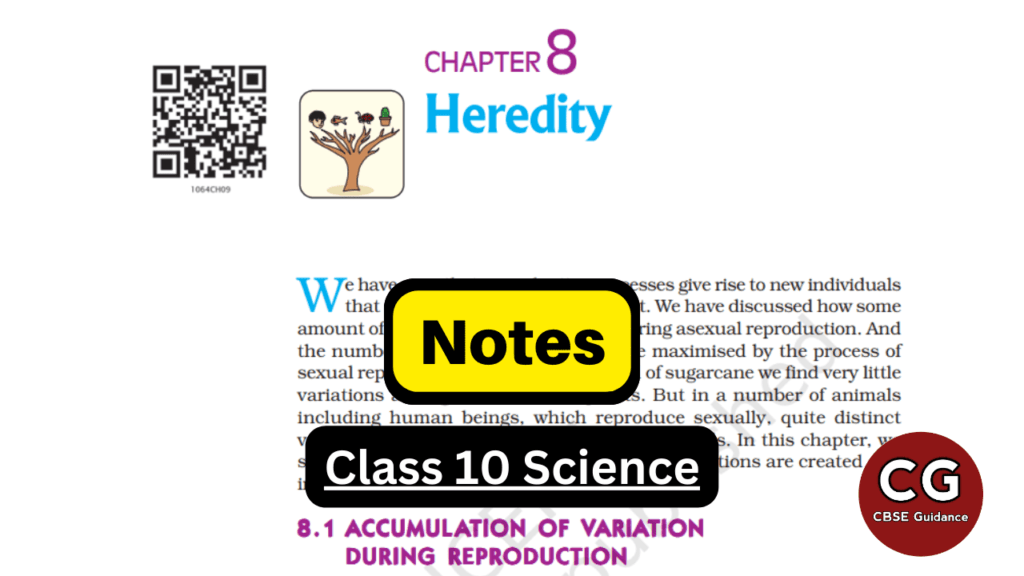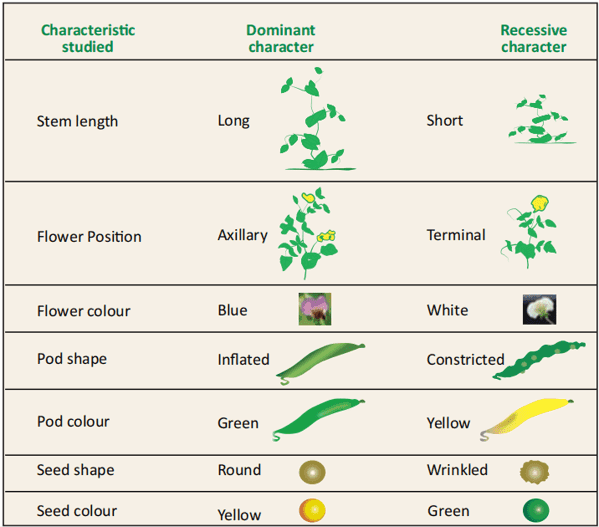Fear not, fellow Class 10 warriors! The battle against Heredity (Science Chapter 8) is won. Forget endless textbook squinting and confusing diagrams – your guide to genetic glory is here!
This blog post is your passport to ace those CBSE 2023-24 board exams. We've meticulously crafted these notes based on the latest NCERT 2023-24 syllabus, ensuring every chromosome, gene, and pea-splitting experiment is crystal clear.
And the best part? You won't just understand it, you'll click with it! Download the free PDF included and watch as Heredity transforms from a daunting monster to a fascinating friend.
So, ditch the stress and dive in! From Mendel's peas to the mysteries of your own DNA, this blog will unlock the secrets of Heredity and propel you towards exam victory. Let's crack the code of genetics, one click at a time!

| Subject | Science (Biology) |
| Class | 10 |
| Board | CBSE & State Boards |
| Chapter No. | 8 |
| Chapter Name | Heredity |
| Type | Notes |
| Session | 2023-24 |
"The way to get started is to quit talking and begin doing."
- Walt Disney
Heredity Class 10 Notes
Table of Contents
Accumulation of Variation During Reproduction
- Inheritance from the previous generation provides both a common basic body design and subtle changes in it, for the next generation.
- The second generation will have differences that they inherit from the first generation, as well as newly created differences.
- In asexual reproduction, there is only very minor differences between them, generated due to small inaccuracies in DNA copying. However, if sexual reproduction is involved, even greater diversity will be generated.
- Trait which exists in larger fraction of the population, is likely to have arisen earlier.
Heredity
Rules for the Inheritance of Traits – Mendel’s Contributions
Gene: It is the basic unit of heredity. It is a specific part (DNA segment) of a chromosome that controls the expression of a character.
Mendel chose a pea plant for his experiments because:
- It is easy to grow.
- It is naturally self-pollinating so is very easy to raise pure-breeding individuals.
- It has a short life span as it is an annual crop so it was possible to follow several generations.
- It is easy to cross-pollinate.
- It has deeply contrasting characters.
- The flowers are bisexual.
List of Dominant and Recessive Traits in Pea Plant

Monohybrid cross: The cross between two pea plants with one pair of contrasting characters is called a monohybrid cross.
Example: Cross between a tall and a dwarf plant.
Meldel's Experiment: Traits may be dominant or recessive
Mendel conducted a monohybrid cross with pea plants, and he observed that one of the contrasting characters disappeared in the F1 generation. This character reappears in the F2 generation (obtained by selfing F1) in just 25% of the progeny.
Mendel concluded that the character which expresses itself in F1 is the dominant character while the other one which is not able to express, though present in F1 individuals, is recessive. This recessive character is able to express only in its pure form i.e., in 25% of F2 individuals.
Dihybrid Cross: The cross between two plants having two pairs of contrasting characters is called a dihybrid cross.
Example: Cross between a round and green seed plant with a wrinkled and yellow seed plant.
Meldel's Experiment: Traits are inherited independently
Mendel carried out dihybrid crosses by crossing two pea plants differing in contrasting traits of two characters. For example, he crossed a pea plant having yellow color and round seed characters with another pea plant bearing green color and wrinkled seed characters. In the F2 generation, he obtained pea plants with two parental and two recombinant phenotypes as yellow round and green wrinkled (parental) and yellow wrinkled and green round (recombinant). This indicated that traits separated from their original parental combinations and got inherited independently.
Mendel’s Law of Inheritance
- Law of Dominance: Out of a pair of contrasting characters present together, only one is able to express itself while the other remains suppressed. The one that expresses is the dominant character and the one unexpressed is recessive.
- Law of Segregation: The two members of a pair of factors separate during the formation of gametes.
- Law of Independent Assortment: When there are two pairs of contrasting characters, the distribution of the members of one pair into the gametes is independent of the distribution of the other pair.
Genotype: The genetic makeup of an organism.
Phenotype: The observable characteristics of an organism.
How do these Traits get Expressed?
Cellular DNA is the information source for making proteins in the cell. A section of DNA that provides information for one protein is called the gene for that protein. Let us take the example of tallness as a characteristic. We know that plants have hormones that can trigger growth. Plant height can thus depend on the amount of a particular plant hormone. The amount of the plant hormone made will depend on the efficiency of the process for making it. Consider now an enzyme that is important for this process. If this enzyme works efficiently, a lot of hormones will be made, and the plant will be tall. If the gene for that enzyme has an alteration that makes the enzyme less efficient, the amount of hormone will be less, and the plant will be short. Thus, genes control characteristics or traits.
Chromosomes: Thread-like structures made up of DNA found in the nucleus.
Sex Determination
- A human male has 22 pairs of chromosomes along with the XY sex chromosome.
- A human female has 22 pairs of chromosomes along with the XX sex chromosome.
- The original number of chromosomes becomes half during gamete formation. When the gamete fuse, the original number of chromosomes is restored in the progeny.
In human beings, the genes inherited from our parents decide whether we will be boys or girls. Women have a perfect pair of sex chromosomes (XX). But, men have a mismatched pair (XY).
All children will inherit an X chromosome from their mother regardless of whether they are boys or girls. Thus, the sex of the children will be determined by what they inherit from their father. A child who inherits an X chromosome from her father will be a girl, and one who inherits a Y chromosome from him will be a boy.
Parents: Male (XY) x Female (XX)
Gametes: X, Y (from male) and X, X (from female)
| Gametes | X | Y |
| X | XX (Female) | XY (Male) |
| X | XX (Female) | XY (Male) |
Download Heredity (Chapter 8) Class 10 NCERT Underlined PDF
| Must Read: Heredity Class 10 Important Questions with Answers to get an idea of the different types of questions asked from this chapter. |
| You Might Also Like: CBSE Class 10 Notes CBSE Class 10 Important Questions and Answers |
Hope you liked these notes on Class 10 Science Chapter 8 Heredity. Please share this with your friends and do comment if you have any doubts/suggestions to share.
Excellent notes.